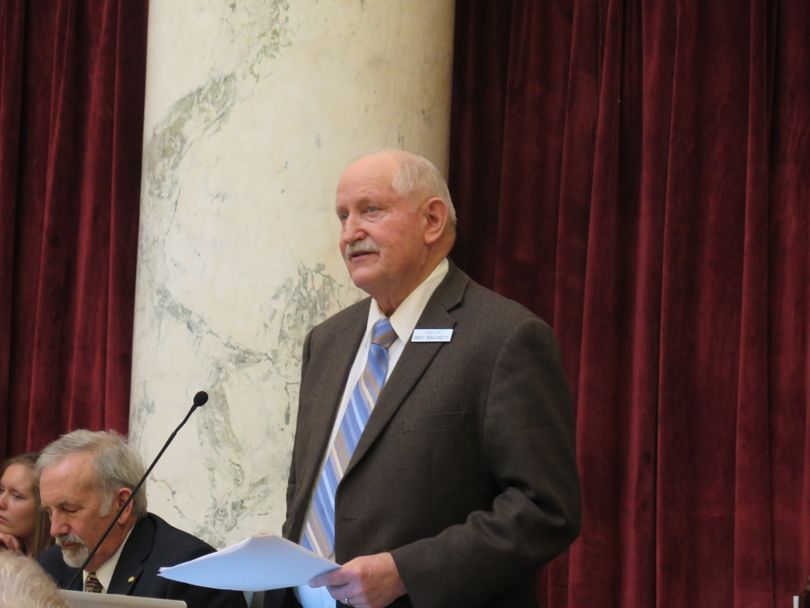Brackett opens debate on SB 1206, transportation funding bill

Senate Transportation Chairman Bert Brackett, opening debate in the Senate on SB 1206, the transportation funding bill, distributed statements from several agricultural groups supporting the bill, along with a summary from the Idaho Transportation Department of past projects funded by GARVEE bonds in Idaho.
"Certainly it's not an end-all," Brackett told the Senate. "This provides some additional tools and utilizes some existing tools." Much of the bill is focused on new construction, he noted, but the surplus eliminator funding would go to maintenance. There still will be future needs for more road maintenance funding, Brackett said.
He summarized the bill, which includes three parts:
1 - $300 million in GARVEE bonding, borrowing against future federal highway allocations, to be spent for projects on the original list of high-priority corridors for which Idaho has used GARVEE bonds in the past. Among the corridors on the list is troubled I-84 through Canyon County.
2 – A two-year extension of the “surplus eliminator,” which otherwise expires this spring. As now, any unanticipated state surplus at the end of the year would be split between the state’s rainy-day fund and road work, through the ITD’s strategic initiatives program. Unlike the current surplus eliminator, the road money would be split 60-40, with 60 percent going to state projects, and 40 to local ones.
3 – Creation of a new Transportation Expansion and Congestion Mitigation Fund, with money to flow into that new fund from two sources: About $5 million a year from cigarette tax funds that now go to ITD for the strategic initiatives program; and a 1 percent share of the state sales tax – estimated at around $15 million – calculated after revenue sharing for local governments is taken out, so they remain whole.
The amount available from the surplus eliminator varies each year; it’s been anywhere from $21.9 million to $108.3 million in past years. Aside from that, the bill represents a $320 million investment in transportation, although the bonding would be paid for in annual payments, not up-front.
The general fund impact for next year’s budget, prior to any payments coming due on the new bonds, would be the $15 million from the sales tax, but the bill also changes the timing of statutory transfers to the budget stabilization fund, which would result in a $15.2 million positive impact to the general fund in fiscal year 2018, according to the bill’s Statement of Purpose.
